Tropical Fruit Leathers
This post may contain affiliate links.
These tropical fruit leathers taste like a ray of sunshine. Made of strawberries, mango, and bananas, this is the perfect snack to lift your spirits on or off the trail!
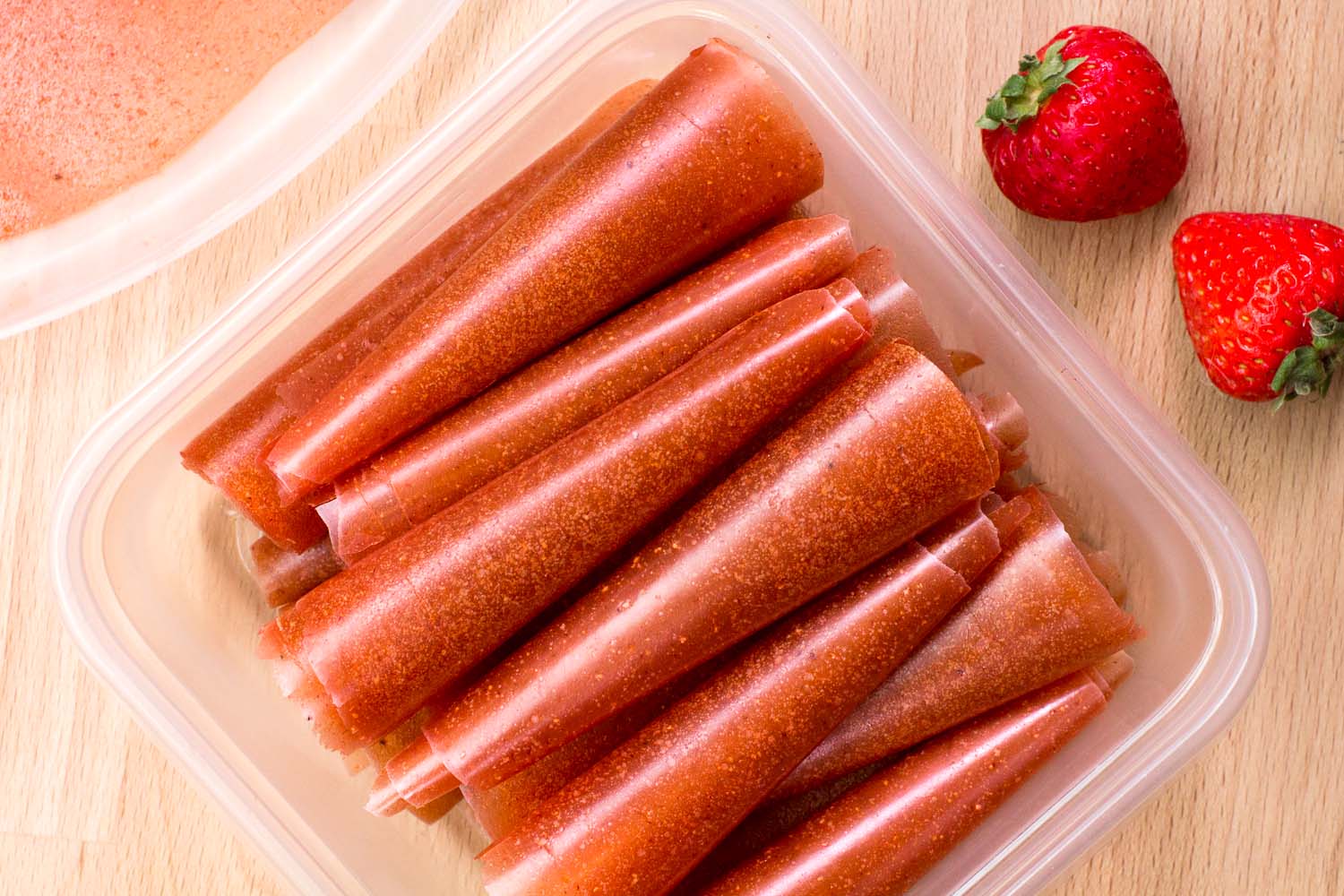
Store-bought fruit leathers – while delicious – can be expensive and loaded with funky additives. That’s why we prefer to make our own at home using a dehydrator. Making your own fruit leathers not only drops the per-unit price way down, but it’s also a great way to use ripe produce. Just find a flavor combination you like and make up a big batch.
We went with mango, banana, and strawberry for this particular fruit leather, but a lot of different types of tropical fruit would work. When in season, fresh fruit is best. But there are a lot of great flash frozen fruits in the freezer section of your grocery store. Just be sure to defrost them before you begin.
How to make Tropical Fruit Leathers
In a blender or food processor, blend together all the fruit and the juice of half a lemon, which will add a little bit of acid to brighten up the flavor and maintain the color of the fruit. We also found adding 1 tablespoon of sugar really helps bring out the natural sweetness of the fruit, but you should sweeten to taste.
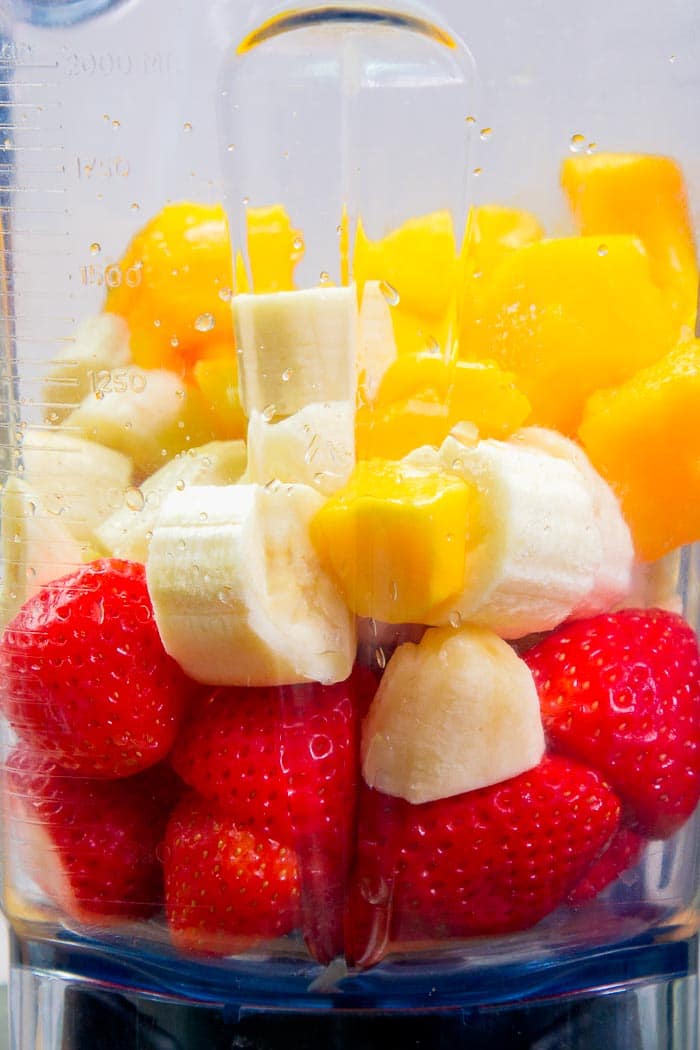
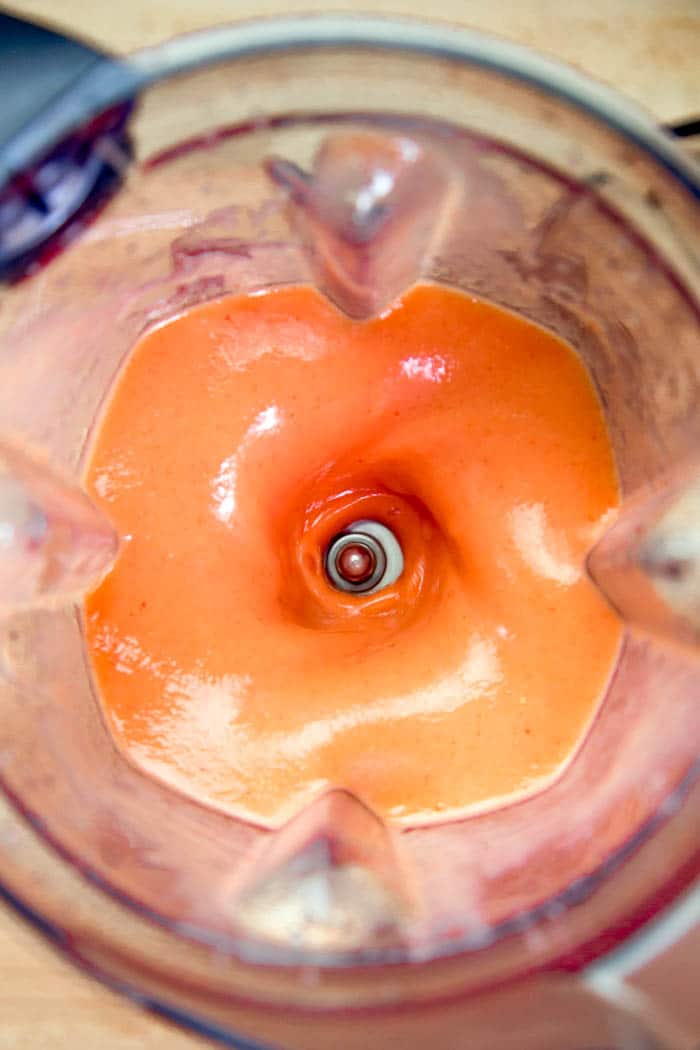


Before we pour the mixture out onto our dehydrator fruit leather trays, we lightly grease them with a non-flavored oil. (Since these are tropical fruit leathers, coconut oil would work well here too!) This a critical step and will help make removing the leathers a lot easier once they’re done.
The other key to getting the fruit leather the right texture is to make sure you spread your fruit mixture evenly on the trays. Even layers will cook evenly. Uneven layers will cook unevenly. Our best tip is to use an offset spatula to spread the puree, or we have found that gently shaking the trays in our hands helps “settle out” the mixture to evenly coat the trays.
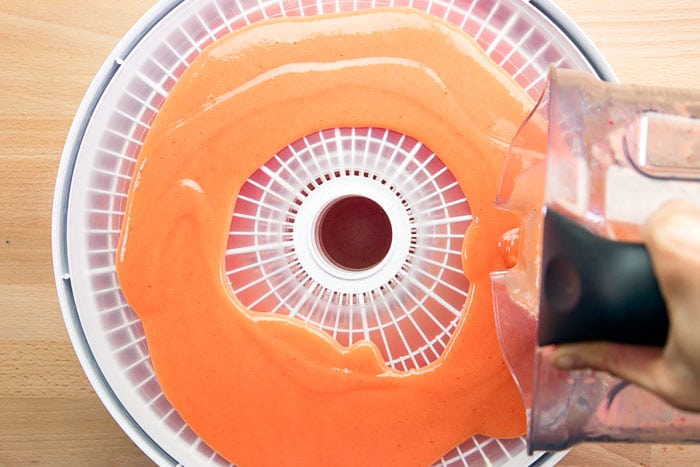
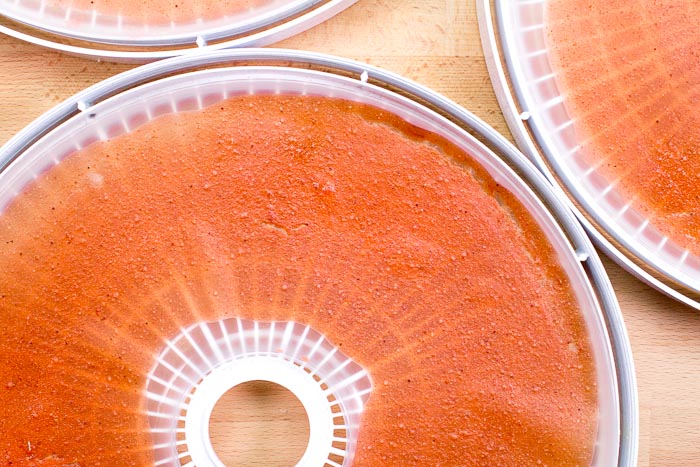
Run the dehydrator at 135F for 4-6 hours, depending on how thick your fruit puree ended up being. It’s a good idea to check on it periodically to make sure everything is setting up nicely. You want the top to be just barely tacky. Too wet and it’ll fall apart. Too dry and it will crack when you try to peel it off the tray. Once you get them to that sweet spot, remove and enjoy.
Our dehydrator is circular, so we cut our fruit leather discs into quarters and then roll them up. We usually store them up in a resealable container so they don’t dry out over time – not that they last more than a few hours anyway!
Equipment Notes
We use the Nesco Snackmaster 75 dehydrator. While there is nothing fancy about it, it is a good entry-level dehydrator. It includes two fruit leather trays, but you’ll likely want to pick up some extras – we usually use 4 trays to make this recipe.
More hiking snacks
↠ Maple Trail Mix
↠ Tye Dye Fruit Leathers
↠ S’mores Granola Bars
↠ The Best Trail Mix Recipes
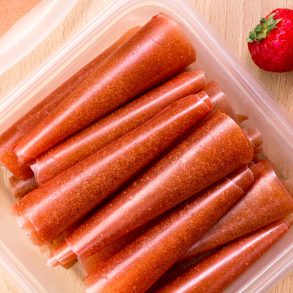
Ingredients
- 1 lb strawberries, stems removed
- ½ lb mango
- 2 bananas
- ½ lemon, juiced
- 1 tablespoon sugar, or to taste
- Oil
Instructions
- Thaw the fruit if frozen. Add fruit, lemon juice, and sugar to a blender and blend until smooth.
- Lightly oil your dehydrator fruit leather trays. Divide the fruit puree evenly across the trays - we used 4 trays for ours, but depending on your tray’s surface area yours may require more or fewer trays. The puree should be spread out in an even, ¼” layer.
- Set your dehydrator to 135F and dehydrate 4-6 hours.
- Remove the trays from the dehydrator and carefully peel the leather off the trays. Cut into strips, roll, and store in an airtight container until ready to enjoy.



Great recipe! We have just started to dry all kinds of fruit leathers with my kids and they love it. Best food they take out for their 4-5 hour sailing training and competition sessions. Also started to take it to school. One idea: try jam instead. We have some older, home-made jams lying around and poured them into the trays. it takes 18-24-36 hours to dry, but the wait is worth it. Even less than perfect jams make very tasty fruit leathers. If they are but soft we can roll them up with crushed almonds on top, or if they are very dry we roll them up tightly and cut small slices like a sausage. Either way is fine. Makes you wonder how concentrated it is if you start with 1 kg of fresh fruit, end up with 200 g jam, then about 4 sheets of fruit leather.
Thanks for sharing this. We’ve never tried dehydrating jam before but we can’t see any reason why it wouldn’t be totally delicious. 24-hour dry time does seem a bit longer than usual, but I’m sure it’s worth it. It’s all passive “cook time” anyways. Just don’t forget about it! ????
You keep a freezer and blender and dehydrator in your car? And enough power to make these while car camping? Impressive. Impractical, but impressive.
Ha! We wish! No, these are definitely a “make at home” sort of snack.